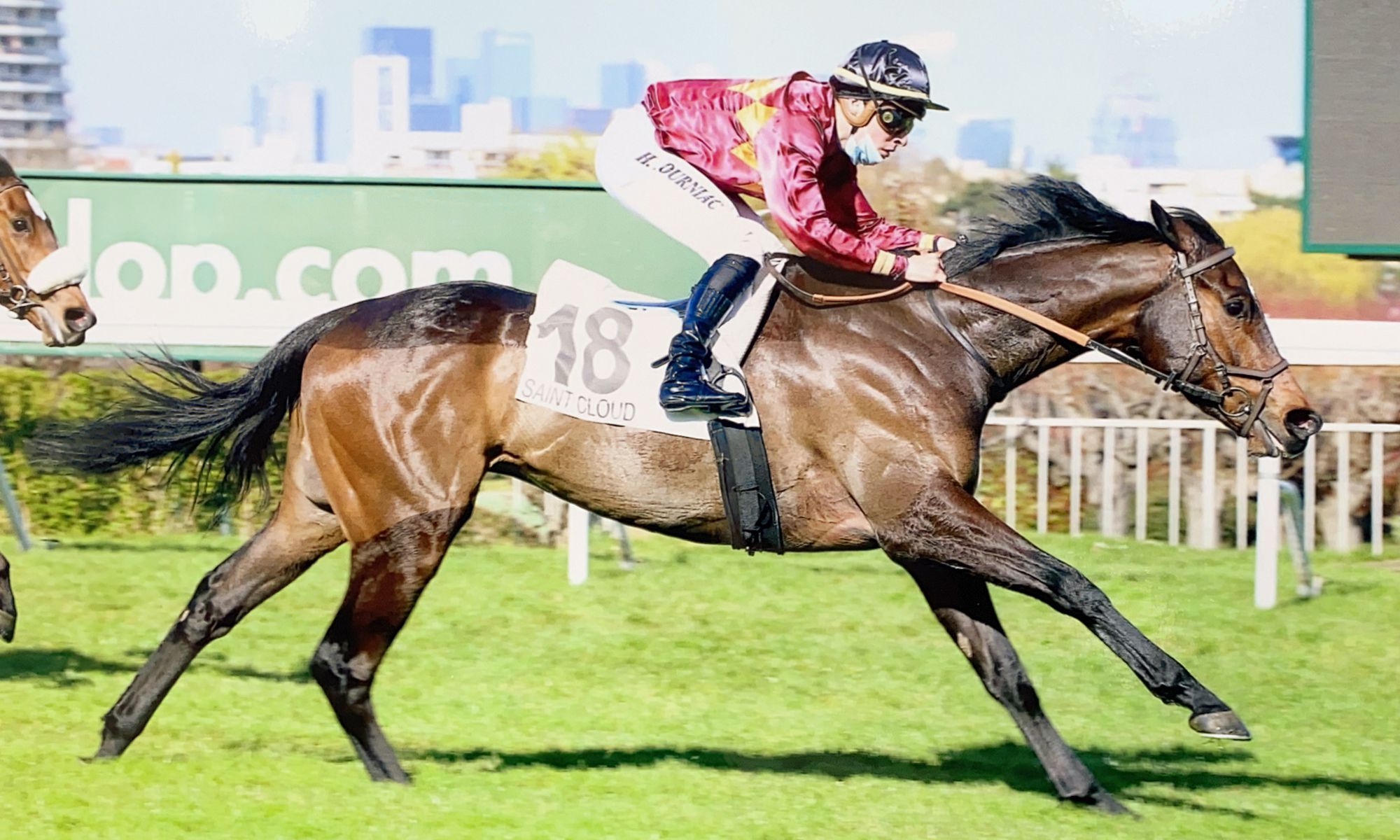A commenter on my last post wanted to know more about the French racing program, so here’s how it works in a nutshell: The main flat racing season runs from March through mid-November, although things start to wind down pretty quickly by the end of October. We have winter racing on the all-weather tracks in Deauville, Pau, Cagnes-sur-Mer and Lyon, but these are all pretty recent – all opened within the past five years or so. Races are divided into “PMU” and “PMH” meetings. PMU meetings are races that can be bet on across the country and beyond, now, while PMH meetings are at the country tracks and you have to be present at the track to bet. There are hundreds of tracks across France, and there is some sort of PMU racing, whether flat, jumps or trotting, every day of the year.
For flat racing, the condition books come out about three times a year. The program doesn’t change all that much from year to year, so you pretty much know what to expect. An average race card will include two or three handicaps, two or three condition races and a claiming race or two. Two-year-old racing starts in March, with short sprints of four or five furlongs, usually run on a straight. The distance builds through the year, working towards a mile and an eighth or a mile and a half by the end of the year. Two- and three-year-olds usually only run against horses of the same age, although there are some races pitting three-year-olds against older horses by the end of the season. Once horses get to be four, they usually have to face open company (meaning older horses). There are some races restricted to four-year-olds, but those get hard to come by near mid-season. There is also a good program for five-year-olds and older. Fillies and colts tend to run separately in the beginning two-year-old races, but after that, there isn’t much segregation by sex, except in the higher-level races. Fillies racing against colts is no big deal here, and it happens all the time. It seems to be quite different in America, where much is made of a filly running in mixed company.
Purses are good relative to training costs, and money is paid through fifth place, or seventh place in the big Tierce handicaps. The average PMU purse is 20,000 euros, with 10,000 to the winner. The Tierce handicaps are usually worth around 48,000, and a low-level claimer might be only 15,000, with 7,500 for the winner. Training costs run about 18,000 to 20,000 euros a year, so if your horse comes in the money a few times or wins a couple of races, you’ve covered your costs.
Claimers work much differently here than in America. Claims are put in AFTER the race, not before. Bids are made in a “silent auction” format; the claiming prices is the minimum one can bid, bulletins are put into a box, and when they are read out, the highest bid gets the horse. Owners can put in their own bid of they want to defend the horse and keep it, but the owner must then pay the difference between the claiming price and the amount he bid (and he still risks losing the horse if there is a higher bid). The minimum claiming price at a PMU meeting is 9,000 euros, and the maximum is 42,000 euros. Two or three times a year, there is a “claiming day,” when all the races on the card are claimers. Otherwise, there usually aren’t more than two or three claimers on any card.
Horses qualify for handicaps after having run three times to get a rating. The best way to get a nice low rating is to keep your horse in low-level claimers for those three races, and preferably not in the money. You know the saying: Keep yourself in the best company you can and your horses in the worst company you can.


Gina, thanks. This is very informative.
I have friends who are breeders, and when one of the horses they’ve bred wons money, they win some too. (I don’t really know how much, but that’s a nice incentive!)
NOt bad, What does it cost you to keep your horse -stall/yard rent cost of oats, galop boy etc. vanning etc???
Vanning costs are limited because France Galop subsidizes transport to races. Personnel costs are very high in France, which means that of the 55 euros a day I charge, there is only a 5 euro profit margin. Everything else goes out in costs – box rent, grain, hay, bedding, shoes, salaries.
Wow. That doesn’t leave much room for error or an unexpected expense.
That’s why we have to win!